Six Solar Terms in Winter
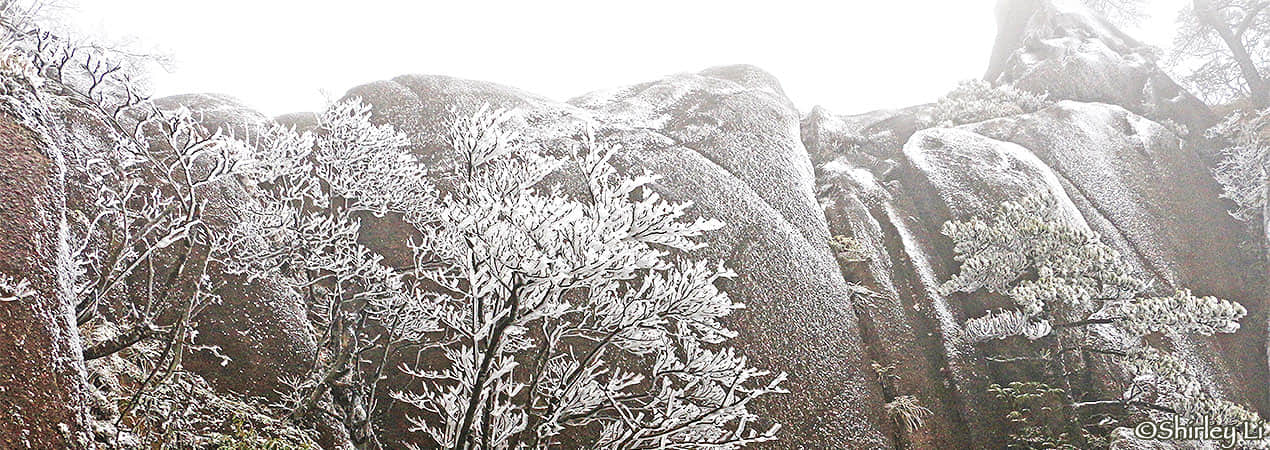
The cold winter follows the poetic autumn. November, December and January are winter months in the Northern Hemisphere. Climatologically, seasons with an average temperature below 10 degrees centigrade for 5 consecutive days are regarded as the wintertime. China’s lunar calendar lists October, November and December as winter months, including six solar terms: Beginning of Winter, Minor Snow, Major Snow, Winter Solstice, Minor Cold and Major Cold. Beginning of Winter indicates the arrival of winter, and Winter Solstice means winter is over.
Lidong (Beginning of Winter)
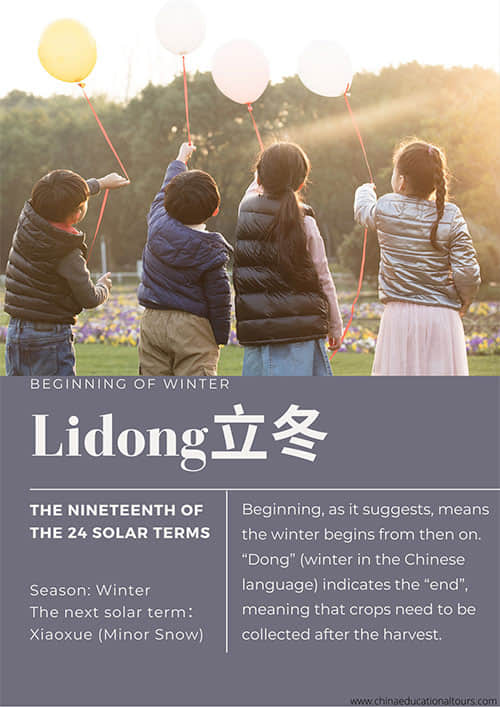 Lidong立冬
Lidong立冬
Beginning, as it suggests, means the winter begins from then on. “Dong” (winter in Chinese language) indicates the “end”, meaning that crops need to be collected after the harvest. Hence, Lidong is seen as the arrival of winter. After that period, most parts of the country are expecting the severity of the season.
- Chinese Name:立冬 Lì Dōng
- Meaning: the winter begins
- Climate: stronger Northerly wind, declined temperature, Minor Snow
- Season: winter
- Date: Nov. 6, 7 or 8
- Traditional food: dumplings, mutton soup
- Customs: winter swimming, winter celebration
- Farming Activities: farming and fertilization management against the frost
- Health Tips: Eat less raw or cold food
- Next solar term: Xiaoxue (Minor Snow)
Beginnings of winter, spring, summer and autumn are known as the “Four Beginnings”. They were important festivals in the ancient, farming-dominated society. After a year of hard work, people would be delighted to take a break on this day and reward their whole family.
The Northern part of China celebrates Lidong as the “Small Spring Festival”, an occasion for a dumpling feast. In the north there goes a saying, “Eating dumplings when the winter begins helps one better resist the upcoming bitter cold”.
Xiaoxue (Minor Snow)
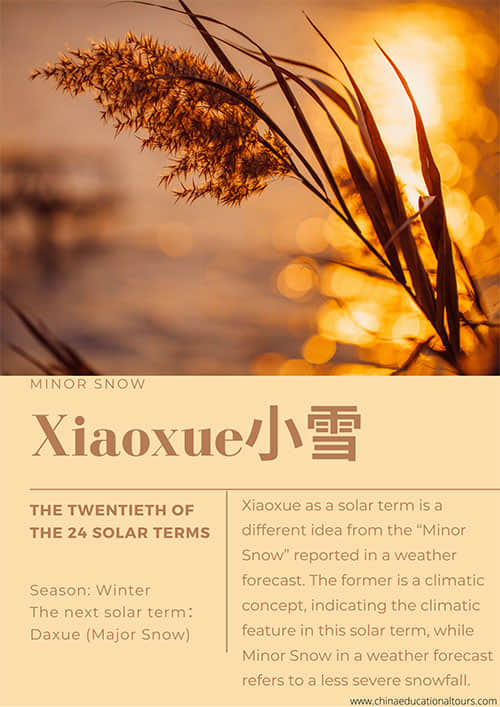 Xiaoxue小雪
Xiaoxue小雪
Ranking twentieth among the 24 solar terms, Xiaoxue is the second solar term of winter. As snow only comes with cold weather, like Yushui and Guyu, it is a direct indication of rainfall.
- Chinese name: 小雪Xiǎo Xuě
- Meaning: North China is expecting snowfall
- Climate: temperature gradually declines to below 0℃
- Season: winter
- Date: Nov. 21, 22, 23
- Traditional food: glutinous rice cake, radish
- Customs: preserved meat pickling
- Farming Activities: vegetable storage, slack farming
- Health Tips: reasonable diet for the benefit of the kidneys
- Next solar term: Daxue (Major Snow)
Xiaoxue (Minor Snow) as a solar term is a different idea from the “Minor Snow” reported in a weather forecast. The former is a climatic concept, indicating the climatic feature in this solar term, while Minor Snow in a weather forecast refers to a less severe snowfall. In general, China’s weather in this period shows two characters: 1. Temperature in the north continues to decline; 2. The winter comes to the middle and lower reaches of Yangtze river.
Daxue (Major Snow)
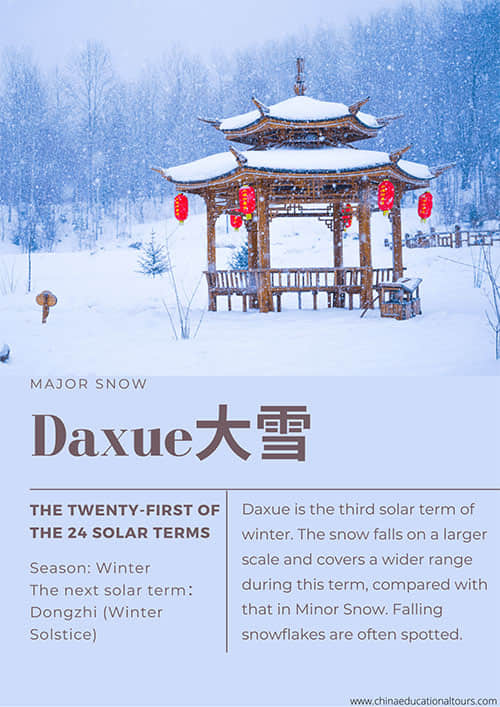 Daxue大雪
Daxue大雪
Ranking twenty-first among the 24 solar terms, Daxue is the third solar term of winter. The snow falls on a larger scale and covers a wider range during this term, compared with that in Minor Snow. Falling snowflakes are often spotted. Like Xiaoxue, Yushui and Guyu, it also directly indicates rainfall.
- Chinese name: 大雪Dà Xuě
- Meaning: cold weather, increased amount of snowfall
- Climate: significant temperature drop, cold weather
- Season: winter
- Date: Dec. 6, 7, 8
- Traditional food: red date cake
- Customs: watch the freeze-up of rivers and pickle the “salty food”
- Farming Activities: strong seedling cultivation and warm keeping
- Health Tips: keep warm and defend against cold
- Next solar term: Dongzhi (Winter Solstice)
As it says, heavy snow promises a bumper year. In the severe winter, the snow piles up to cover the earth and keep the temperature for the ground and crops from declining too sharply due to the cold current, creating a good overwintering environment for winter crops. When thawing, the snow increases the soil moisture necessary for the spring growth. Containing nitrides five times as much as ordinary rain water, snow water has some fertilizing effect on the soil. There is a farmer's proverb, “three layers of snow on wheat this year, a sound sleep on bread next year”.
Dongzhi (Winter Solstice)
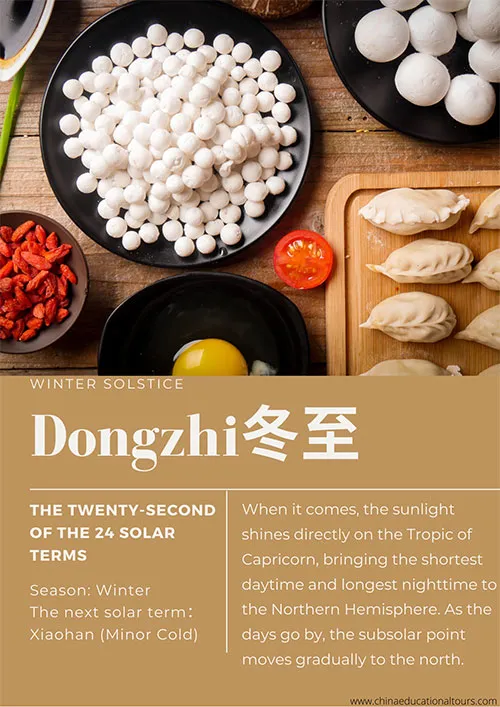 Dongzhi冬至
Dongzhi冬至
Ranking as twenty-second among the 24 solar terms, it is the fourth solar term of winter. When it comes, the sunlight shines directly on the Tropic of Capricorn, bringing the shortest daytime and longest nighttime to the Northern Hemisphere. As the days go by, the subsolar point moves gradually to the north. Chinese folks often talk about “there are nine cold periods and Dongzhi marks the ninth”, which means that the country’s weather at all places has entered the coldest period.
- Chinese Name: 冬至Dōng Zhì
- Meaning: the cold is approaching
- Climate: snowstorm, low temperature
- Season: Winter
- Date: Dec. 21, 22, 23
- Traditional food: dumpling, rice dumpling, mutton soup
- Customs: to worship the ancestors
- Farming Activities: keep the agricultural plants warm
- Health Tips: adequate sleep, including health recuperation
- Next solar term: Xiaohan (Minor Cold)
Xiaohan (Minor Cold)
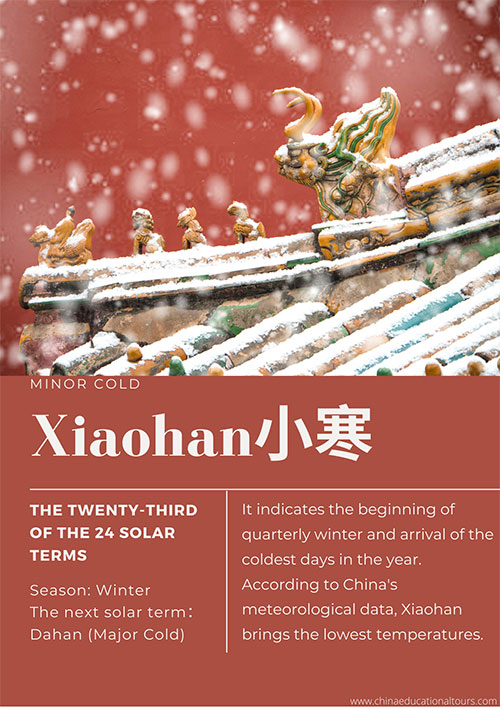 Xiaohan小寒
Xiaohan小寒
Xiaohan ranks twenty-third among the 24 solar terms and is the fifth solar term of winter. It indicates the beginning of quarterly winter and arrival of the coldest days in the year. According to China's meteorological data, Xiaohan brings the lowest temperatures; only the Major Cold terms in a few years have recorded as having even lower temperatures.
- In Chinese: 小寒Xiǎo Hán
- Meaning: the coldest days in a year begin
- Climate: high wind, declined temperature, sleet, the lowest temperature
- Season: winter
- Date: January 4, 5, 6
- Traditional food: vegetable rice, glutinous rice
- Customs: largely centering on food, like Laba congee
- Farming Activities: cold and frost prevention, fertilizer accumulation and production, water conservancy project
- Health Tips: more warm food
- Next solar term: Dahan (Major Cold)
Dahan (Major Cold)
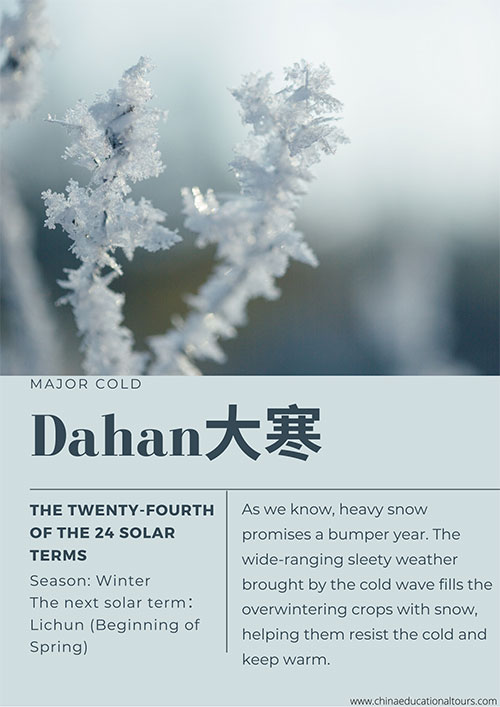 Dahan大寒
Dahan大寒
Dahan is the last among the 24 solar terms and the sixth solar term of winter. Like Xiaohan, Xiaoshu, Dashu and Chushu, Dahan is also the sign of temperature change.
Cold weather is as harmful as it is beneficial. As we know, heavy snow promises a bumper year. The wide-ranging sleety weather brought by the cold wave fills the overwintering crops with snow, helping them resist the cold and keep warm. The sleet also alleviates the drought in winter and benefits the crops. Besides, the cold wave-reduced temperature serves as the natural pesticide that helps defend against the next year's pests’ attack.
- Chinese name: 大寒Dà Hán
- Meaning: severe cold
- Climate: sleety weather, high wind, declined temperature
- Season: winter
- Date: January 19, 20, 21
- Traditional food: Laba congee
- Customs: celebrate the upcoming new year and do the cleaning
- Farming Activities: protect animals and crops from the severe cold and frost
- Health Tips: avoid bad temper
- Next solar term: Lichun (Beginning of Spring)
All Chinese people are ready to embrace the new year after Dahan. Spring Festival, China’s most important traditional festival, falls at this time, followed by a new round of solar terms circulation.
In winter, the temperature of China's north and south can differ drastically. Generally, when the northern parts are carpeted with snow, Hainan, South China Sea and Xisha Islands are having summer-like weather. For traveling, you may go to warm Sanya to experience a romantic beach, or visit Harbin to marvel at the crystal-clear snow world in the North.
Further Reading
- The 24 Solar Terms
- Recommended Dishes for the 24 Solar Terms
- Six Solar Terms in Spring
- Six Solar Terms in Summer
- Six Solar Terms in Autumn

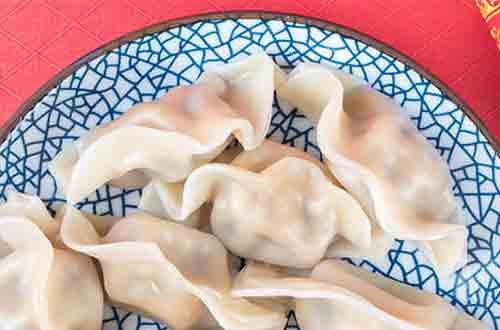 4 Typical Foods on Chinese New Year
4 Typical Foods on Chinese New Year 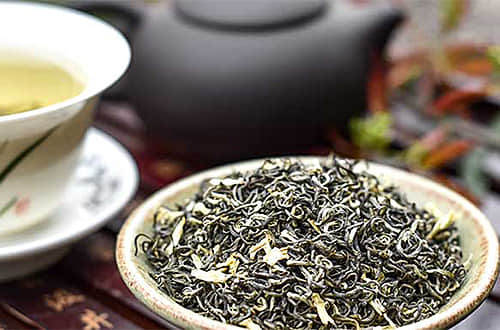 Types of Chinese Tea
Types of Chinese Tea  Regional Cuisines in China
Regional Cuisines in China 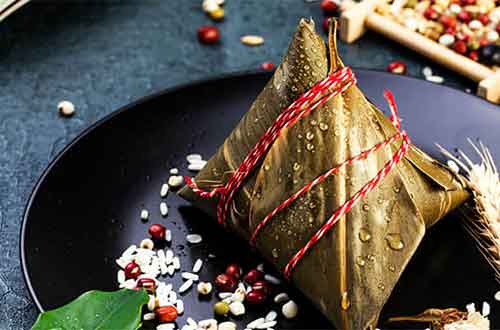 Popular Foods for Special Occasions
Popular Foods for Special Occasions